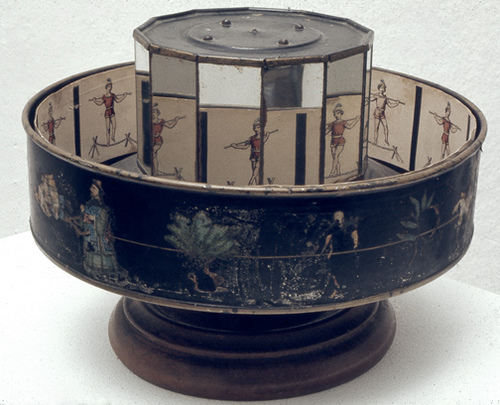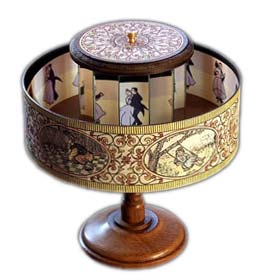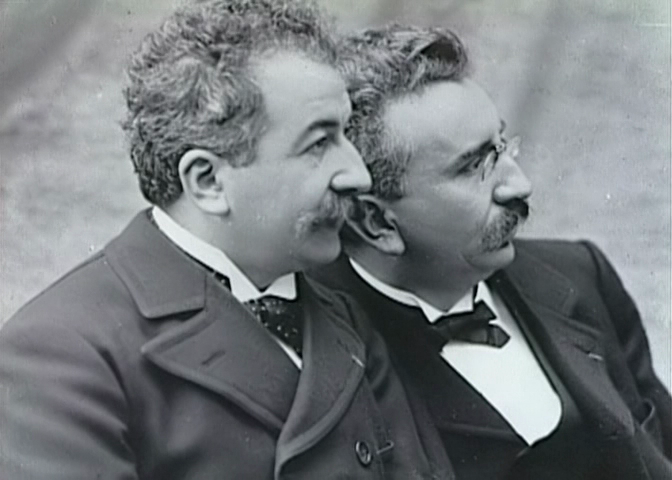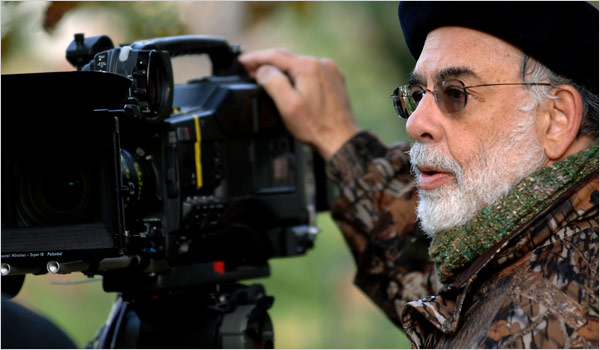Both the zoetrope and phenakistiscope provided the break in the images by the black space between adjacent slits in the disc or drum. However, this design was adapted by Emile 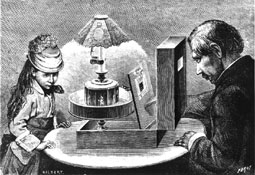 Reynaud in Paris in 1877 to form the praxinoscope. It used a drum, just as the zoetrope had, with the images drawn on a band placed around the inside of the cylinder. However, rather than having slits through which the images were viewed, the cartoon strip was reflected in a series of mirrors, mounted in a ring set halfway between the outer edge of the drum and the central axle. When the drum was spun, the viewer watched the progression of images in the mirrors. A candle set above the axle allowed the images to be seen more clearly.
Reynaud in Paris in 1877 to form the praxinoscope. It used a drum, just as the zoetrope had, with the images drawn on a band placed around the inside of the cylinder. However, rather than having slits through which the images were viewed, the cartoon strip was reflected in a series of mirrors, mounted in a ring set halfway between the outer edge of the drum and the central axle. When the drum was spun, the viewer watched the progression of images in the mirrors. A candle set above the axle allowed the images to be seen more clearly.
Two years later, Reynaud developed the design to create the praxinoscope theatre. With the drum now set into a wooden box, the lid of the box carried a hole through which the viewer saw a background scene that set the images on the cartoon strip in context.
All these early animated toys gave the inspiration for the creation of moving pictures based on real life. When it first became possible to take photographs fast enough to simulate a moving image, the cinema was born.

